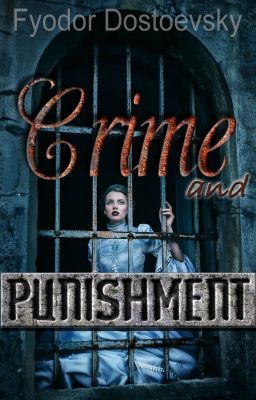Classics
18 stories
WilliamShakespeare
- Reads 210,031
- Votes 4,221
- Parts 29
"Macbeth" tells the story of a brave Scottish general named Macbeth who receives a prophecy from a trio of witches that one day he will become King of Scotland. Consumed by ambition and spurred to action by his wife, Macbeth murders King Duncan and takes the throne for himself. He is then wracked with guilt and paranoia, and he soon becomes a tyrannical ruler as he is forced to commit more and more murders to protect himself from enmity and suspicion. The bloodbath and consequent civil war swiftly take Macbeth and Lady Macbeth into the realms of arrogance, madness, and death.
Cover by @newsies-
+3 more
CharlotteBronte
- Reads 1,870,230
- Votes 25,010
- Parts 41
"Jane Eyre" follows the emotions and experiences of its eponymous character, including her growth to adulthood, and her love for Mr. Rochester, the byronic master of fictitious Thornfield Hall.
JaneAusten
- Reads 1,395,529
- Votes 14,823
- Parts 55
Emma Woodhouse, aged 20 at the start of the novel, is a young, beautiful, witty, and privileged woman in Regency England. She lives on the fictional estate of Hartfield in Surrey in the village of Highbury with her elderly widowed father, a hypochondriac who is excessively concerned for the health and safety of his loved ones. Emma's friend and only critic is the gentlemanly George Knightley, her neighbour from the adjacent estate of Donwell, and the brother of her elder sister Isabella's husband, John. As the novel opens, Emma has just attended the wedding of Miss Taylor, her best friend and former governess. Having introduced Miss Taylor to her future husband, Mr. Weston, Emma takes credit for their marriage, and decides that she rather likes matchmaking.
LewisCarroll
- Reads 72,015
- Votes 1,987
- Parts 12
"Through the Looking-Glass, and What Alice Found There" is the sequel to Alice's Adventures in Wonderland. The themes and settings of Through the Looking-Glass make it a kind of mirror image of Wonderland: the first book begins outdoors, in the warm month of May (4 May), uses frequent changes in size as a plot device, and draws on the imagery of playing cards; the second opens indoors on a snowy, wintry night exactly six months later, on 4 November (the day before Guy Fawkes Night), uses frequent changes in time and spatial directions as a plot device, and draws on the imagery of chess.
LewisCarroll
- Reads 1,239,655
- Votes 13,050
- Parts 12
"Alice's Adventures in Wonderland" tells of a girl named Alice who falls down a rabbit hole into a fantasy world populated by peculiar, anthropomorphic creatures. The tale plays with logic, giving the story lasting popularity with adults as well as children.
FydorDostoevsky
- Reads 94,868
- Votes 2,345
- Parts 42
Crime and Punishment is a novel by the Russian author Fyodor Dostoevsky. It was first published in the literary journal 'The Russian Messenger' in twelve monthly installments during 1866. Later, it was published in a single volume. It is the second of Dostoevsky's full-length novels following his return from 5 years of exile in Siberia. Crime and Punishment is considered the first great novel of his "mature" period of writing.
Crime and Punishment focuses on the mental anguish and moral dilemmas of Rodion Raskolnikov, an impoverished ex-student in Saint Petersburg who formulates a plan to kill an unscrupulous pawnbroker for her money. Before the killing, Raskolnikov believes that with the money he could liberate himself from poverty and go on to perform great deeds; but confusion, hesitation, and chance muddy his plan for a morally justifiable killing.
Cover made by the amazing Amber @The3dreamers.
CharlesDickens
- Reads 170,254
- Votes 2,718
- Parts 6
A Christmas Carol tells the story of bitter and miserly Ebenezer Scrooge and his ideological, ethical, and emotional transformation resulting from supernatural visits by Jacob Marley and the Ghosts of Christmas Past, Present, and Yet to Come.
ENesbit
- Reads 2,568
- Votes 117
- Parts 15
The Railway Children is a children's book by Edith Nesbit, originally serialised in The London Magazine during 1905 and first published in book form in 1906. It has been adapted for the screen several times, of which the 1970 film version is the best known. The Oxford Dictionary of National Biography credits Oswald Barron, who had a deep affection for Nesbit, with having provided the plot.
The setting is thought to be inspired by Edith's walks to Chelsfield railway station close to where she lived, and her observing the construction of the railway cutting and tunnel between Chelsfield and Knockholt.
Contents
LeoTolstoy
- Reads 17,510
- Votes 1,125
- Parts 200
War and Peace is a novel by the Russian author Leo Tolstoy, which is regarded as a central work of world literature and one of Tolstoy's finest literary achievements.
The novel chronicles the history of the French invasion of Russia and the impact of the Napoleonic era on Tsarist society through the stories of five Russian aristocratic families. Portions of an earlier version, titled The Year 1805, were serialized in The Russian Messenger from 1865 to 1867. The novel was first published in its entirety in 1869.









![WAR AND PEACE [To Be Continued in Second Part] by LeoTolstoy](https://img.wattpad.com/cover/7269807-256-k7f19df.jpg)